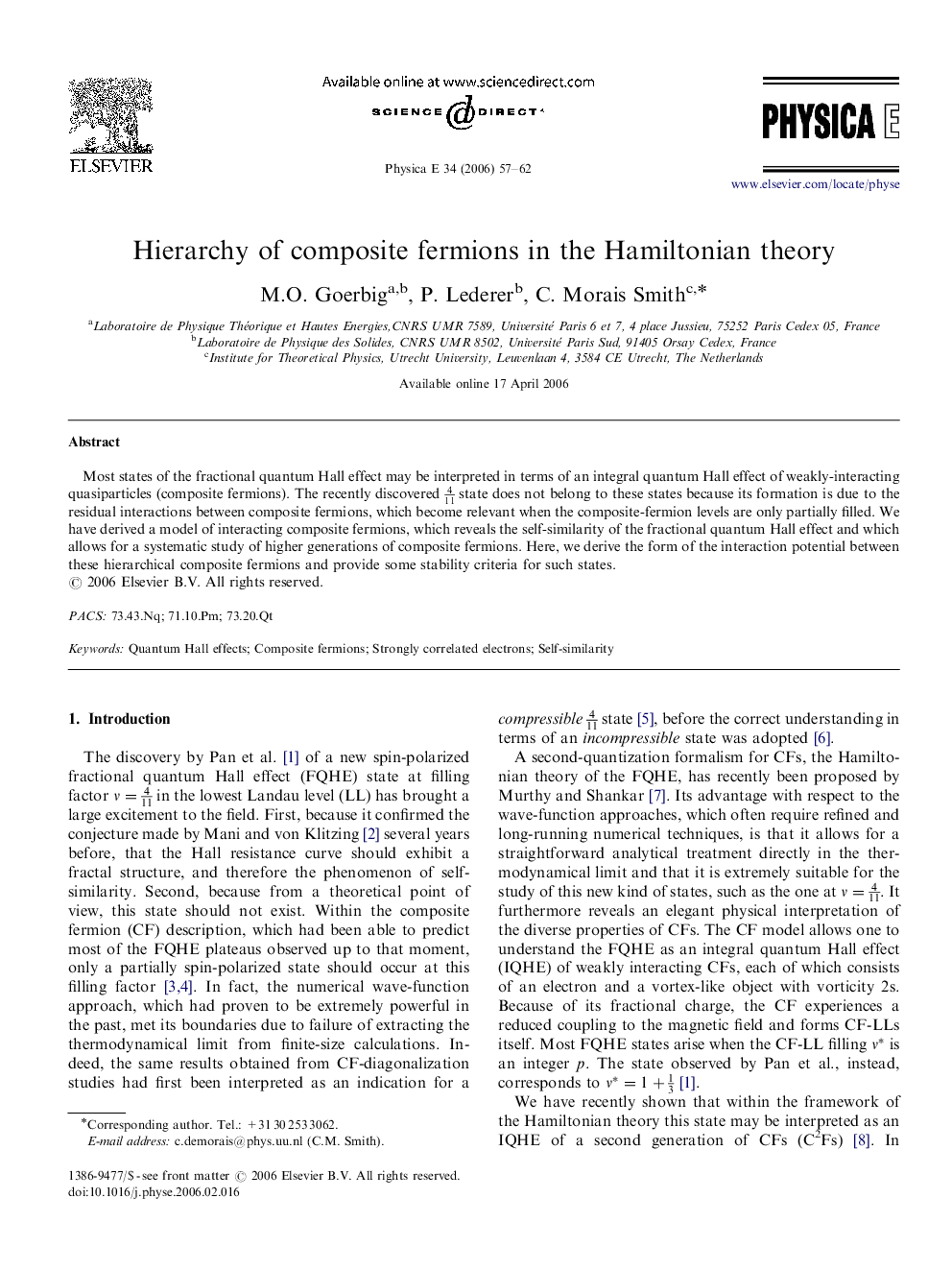| Article ID | Journal | Published Year | Pages | File Type |
|---|---|---|---|---|
| 1547519 | Physica E: Low-dimensional Systems and Nanostructures | 2006 | 6 Pages |
Abstract
Most states of the fractional quantum Hall effect may be interpreted in terms of an integral quantum Hall effect of weakly-interacting quasiparticles (composite fermions). The recently discovered 411 state does not belong to these states because its formation is due to the residual interactions between composite fermions, which become relevant when the composite-fermion levels are only partially filled. We have derived a model of interacting composite fermions, which reveals the self-similarity of the fractional quantum Hall effect and which allows for a systematic study of higher generations of composite fermions. Here, we derive the form of the interaction potential between these hierarchical composite fermions and provide some stability criteria for such states.
Keywords
Related Topics
Physical Sciences and Engineering
Materials Science
Electronic, Optical and Magnetic Materials
Authors
M.O. Goerbig, P. Lederer, C. Morais Smith,
